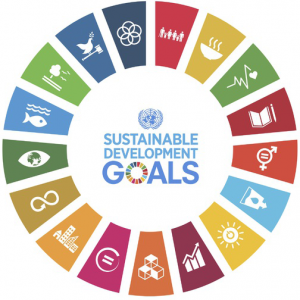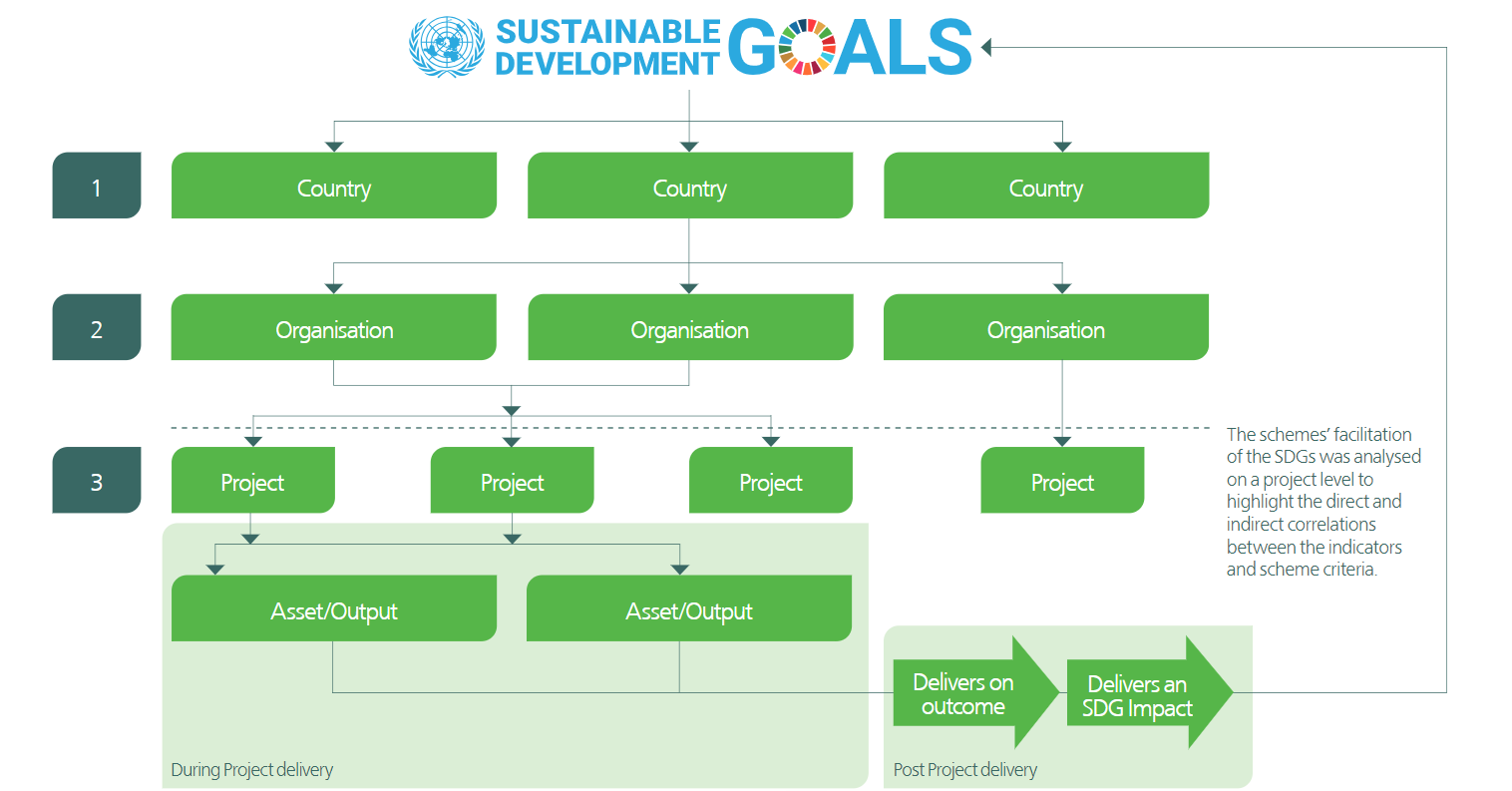An interpretation of the SDG's for use at an infrastructure project level
The United Nations Sustainable Development Goals (SDG’s) were formed at the United Nations conference in Rio De Janerio in 2012 and since then, their objective has been gaining momentum around the world;
| ‘A set of universal goals which meet the urgent environmental, political and economic challenges facing our world’. | 
|
All 193 member states have adopted these 17 goals, many of whom now have country specific metrics and policies in place to prove they are actively trying to meet or in some cases surpass the goals. As the SDG campaign continues to grow, different industrial sectors are looking for ways to adopt and align with the goals and their underlying targets and indicators. The construction sector is no different and has an essential role to play in supporting the widespread achievement of the SDG’s. In order to adopt the goals in the construction industry, direct and indirect solutions must be considered. Understanding a layered approach to tackling the SDGs is key to understanding the role each individual business can carry out in order to play their part. As the SDGs are country level goals, direct correlation to the specific targets and indicators can be difficult. Understanding the indirect relationship, a commercial business has with the goals can be just as important in facilitating the national or global achievement of the SDGs.
Standards, certifications and metrics to measure the sustainability of the built environment have been available since the early 1990’s, however little has been done to link these to the objectives outlined in the SDG’s. The BRE Trust part funded Paul Mansell, a PhD student from London South Bank University through a research project. The aim of which was to map the UN’s Sustainable Development Goals (SDG’s) to frameworks such as CEEQUAL (infrastructure specific) and the Global Reporting Initiative (GRI). Paul, along with researchers at BRE, University College London and London South Bank University, was able to identify a link between best-practice sustainability-reporting frameworks at the project level and those at the organisational level. This enabled the alignment of such frameworks to the SDG’s allowing SDG impact targets to be embedded into the design and construction of an infrastructure project. The work carried out has been published by the Institute of Civil Engineers: ‘Assessing the impact of infrastructure projects on global sustainable development goals.’ Mansell, P., et. al. 2019, November. In Proceedings of the Institution of Civil Engineers-Engineering Sustainability (Vol. 173, No. 4, pp. 196-212). Thomas Telford Ltd.
This project and the detailed article provide a pathway for robust investment appraisals at the project design phase, which would help to define project success more widely across the triple bottom line of economic, social and environmental outcomes and associated impacts. As well as this, the research carried out has shown that there is a very good correlation between the requirements of the BREEAM family of schemes (including CEEQUAL and the Home Quality Mark HQM) and the SDGs. These synergies allow investors, developers and planners to report on the SDG’s through use of data in the BREEAM assessment Framework.
Paul has written two more papers on the use of the Sustainable Development Goals in the built environment:
- Development of a New Business Model to Measure Organizational and Project-Level SDG Impact — A Case Study of a Water Utility Company
- Redefining the Use of Sustainable Development Goals at the Organisation and Project Levels — A Survey of Engineers
Since the publication of this work a team at BRE have carried out a similar mapping exercise, showcasing the alignment of the SDG’s to the suite of BREEAM schemes (including CEEQUAL and HQM). This Suite of schemes is not only focused on infrastructure, but the wider built environment; from civil engineering and infrastructure through to residential developments and commercial operations.
You can also find out more about how our humanitarian sustainability assessment tool, QSAND aligns with the SDG’s. https://www.bretrust.org.uk/knowledgehub/qsand-and-the-sustainable-development-goals/
The aspirations set out within the SDG’s are important as they address the global challenges we face; they can be applied to any project using the methodologies outlined in the above projects. The BRE Trust hope to use and modify this to align our themes and projects with the SDG’s in the future. If you would like more information on how we align to the SDG’s or our plans around this topic in the future, please contact secretariat@bretrust.org.uk.
This article was originally published on the BRE Trust website in August 2020.
[edit] Related articles on Designing Buildings Wiki
- BRE articles.
- Building Research Establishment.
- CEEQUAL.
- Helping achieve the UN's Sustainable Development Goals.
- Home Quality Mark.
- Interactive CEEQUAL and Sustainable Development Goals mapping.
- Natural capital, infrastructure banks and energy system renationalisation.
- QSAND.
- QSAND and the Sustainable Development Goals.
- Sustainable Development Goals and civil engineering.
- Sustainable Development Goals and the triple bottom line.
- Sustainable Development Goals.
- Sustainable Infrastructure Group's sustainable development goals workshop.
Featured articles and news
Infrastructure that connect the physical and digital domains.
Harnessing robotics and AI in challenging environments
The key to nuclear decommissioning and fusion engineering.
BSRIA announces Lisa Ashworth as new CEO
Tasked with furthering BSRIA’s impressive growth ambitions.
Public buildings get half a million energy efficiency boost
£557 million to switch to cleaner heating and save on energy.
CIOB launches pre-election manifesto
Outlining potential future policies for the next government.
Grenfell Tower Inquiry announcement
Phase 2 hearings come to a close and the final report due in September.
Progress from Parts L, F and O: A whitepaper, one year on.
A replicated study to understand the opinion of practitioners.
ECA announces new president 2024
Electrical engineer and business leader Stuart Smith.
A distinct type of countryside that should be celebrated.
Should Part O be extended to existing buildings?
EAC brands heatwave adaptation a missed opportunity.
Definition of Statutory in workplace and facilities management
Established by IWFM, BESA, CIBSE and BSRIA.
Tackling the transition from traditional heating systems
59% lack the necessary information and confidence to switch.
The general election and the construction industry
As PM, Rishi Sunak announces July 4 date for an election.
Eco apprenticeships continue help grow green workforce
A year after being recognised at the King's coronation.
Permitted development rights for agricultural buildings
The changes coming into effect as of May 21, 2024.























